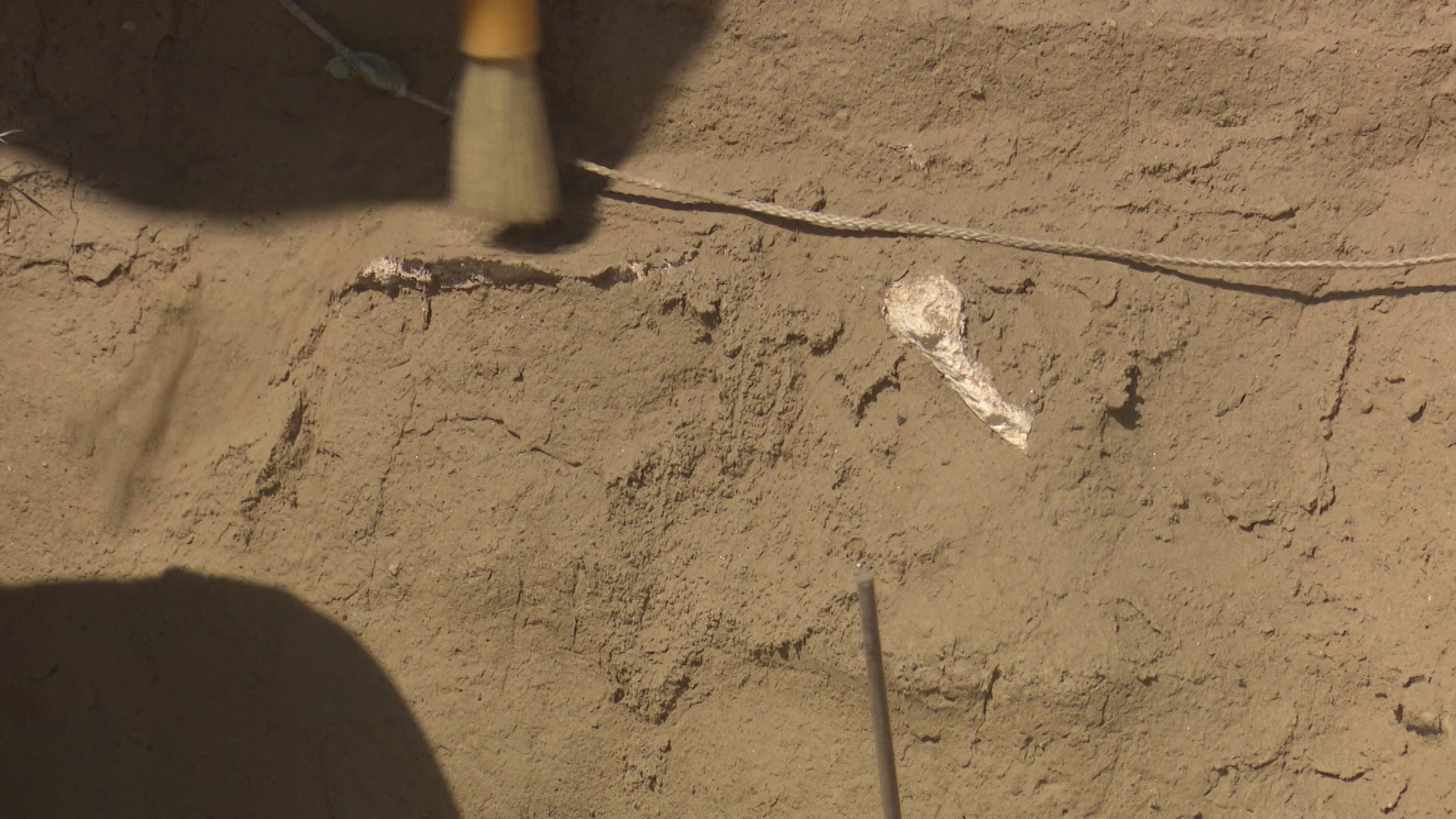KENNEWICK, Wash. —
A team of about 20 volunteers has spent the last 15 years slowly chipping away at uncovering mammoth remains near Kennewick, Washington, simultaneously inviting the public to watch the process.
Their focus is not just on the bones, but on uncovering information about other creatures and climate from that time.
It’s been a slow and steady process. The bones were first accidentally discovered in 1999 by a previous landowner who was digging on the property. A new landowner permitted scientists to dig up the remains nine years later.
Gary Kleinkneckt, a local teacher, was tapped to help. He said the team formally created a nonprofit and named it MCBONES in 2010, then dubbed the dig site the Coyote Canyon Mammoth Site.
All of this came with a catch: the landowner who permitted them to dig had two requirements.
“I will let you do that under the condition that you share it with the schools and the local community, and you keep my name anonymous,” said Neil Mara, a volunteer who helps with the project.
Mara and Kleinkneckt now honor those requirements, not only digging up the remains but also focusing on education.
They host tours of the site, allowing visitors to book trips and get an up-close look at the project. Kleinkneckt educates visitors on the history of the mammoths, then visitors are escorted down to the site to see it firsthand.
Kids who attend a tour can sift through dirt from nearby fields in a similar way that scientists do with the dirt around the remains.
“But when they get here, they get very excited because they get to hunt for stuff and whatever they find, they get to keep,” Mara said.
The team takes replicas of the bones to local museums, 3D printing that Mara oversees. At the Reach Museum in Kennewick, they set up a display and answered questions from young, inquisitive minds.
“Is it pretty hard putting it together?” asked an 11-year-old named Kobe.
“It can be really hard,” Mara said.
“What happens if it breaks?” Kobeb asked.
“That's what makes it hard,” Mara said.
Mara went on to hand Kobe the end of a tape measure and back up until the tool stretched the length of the large room.
“This is how long the longest tusk ever found was," Mara said. "It weighed over 200 pounds."
Mara and Kleinkneckt are two of about 20 volunteers who keep the nonprofit afloat, dedicating their time to education and digs.
Kleinkneckt said the focus is on mammoth recovery, but they’re also interested in everything around the bones. He joked that sometimes the bones get in the way.
“Well in archaeology and paleontology, knowing where something was buried is at least as important as the thing itself,” Mara said.
The team sections off squares and digs down, collecting all of the dirt as they go, tagging each bucket of dirt with where it is from. They then sift through the dirt at a screen station and save everything bigger than one millimeter.
Mara said this is a huge part of their puzzle. They’re able to unveil secrets from the time period, documenting characteristics and discovering every layer of dirt from different periods.
“What we want is to collect soil samples from present day all the way to where the mammoth is. We know from our radiocarbon dating that our mammoth died 17,000 years ago. So that’s a 17,000-year time period that we have data on how the climate changed in this specific area,” he explained, adding that this is some of the best information from this timeframe in this specific area that’s ever been collected.
For example, they’ve found a species of beetle in some layers of dirt but not others. Scientists know this beetle does not thrive in warm environments, so they can infer the climate was warmer in the layers where there are no beetles. Then when the beetles are present, it shows the climate likely cooled.
“Knowing where all that dirt came from, you know where all those bits of animal life came from," Mara said. "And by studying the bits of animal life, you can often tell, you can infer, what the weather was like, the climate."
Plus, they’ve found rocks in the area that are not from nearby, so they’re able to infer that a flood may have occurred and carried the rock from somewhere else to this area.
This investigation into the past is slow but steady. It’s been 15 years of digging with no end currently in sight, partially because their focus is on education and not speed, and partially because their lack of funding slows them down.
Their projects rely on ticket sales, grants and donations to stay funded.
Mara said they hope to invest in radiocarbon dating, but it’s expensive. He said it’s like buying a new TV for every test, and they’d want to do at least 30 tests.
So for now, they’re slowly chipping away with the basic tools they have, thankful to be part of such a significant process.
“I'm holding a bone that’s 11,000 years old," Mara said. "It's older than Stonehenge. It's older than the great pyramids of Egypt. It's older than just about anything human beings have ever made except a few cave paintings and stone tools."

